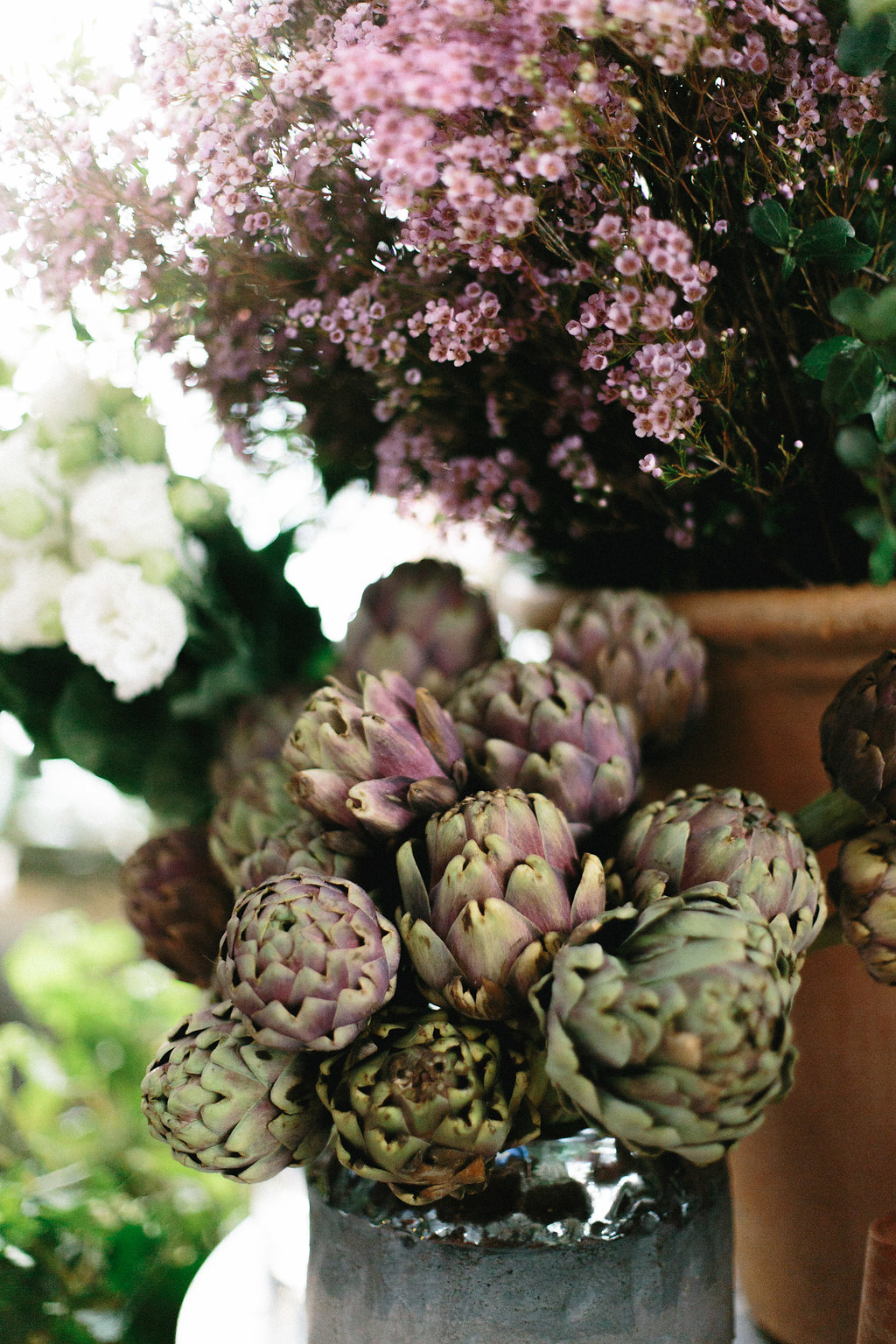The Glory of Simple Things
Autumn Vegetables of the Côte d’Azur
With its warm soups and crisp crudités, autumn invites us to pause and appreciate the seasonal flavors of the harvest. In this article, we delve into the history of some of our favourite crops of the Côte d’Azur.
Autumn is the season of warm hearty soups, roast dinners, casserole dishes and slow cooked meat, and no meal is complete without an accompaniment of veg. But what if we thought of vegetables as the star of the show rather than the supporting actors?
One of the joys of organising the Secret Garden Supper Club is rediscovering vegetables at their best. Particularly the delightful array of green, red, yellow and purple vegetables gracing October markets in the South of France. Vibrant colours and delicate flavors that nourish body and soul: vegetables are truly one of the joys of the changing seasons on the Côte d’Azur. And in the temperate days of autumn on the Côte d’Azur, there are few things more energizing than the crisp, cool bite of fresh crudités, or more comforting than a warm vegetable soup.
Photography: Maya Maréchal. Florist: Julie Guittard
Since creating the Secret Garden Supper Club, I’ve had the good fortune to work directly with farmers who cultivate heritage crops using methods that respect the soil. When you bite into a vegetable that’s just been harvested, it’s hard to believe the extraordinary of something so simple.
Eating fresh produce grown with care which is grown up the road is something I’ve discovered and enjoyed since moving to the French Riviera last year. An opportunity to discover the terroir, the uniquely local ingredients that indescribable array of flavours and textures of local food.
Photography: Anthony Lanneretonne. Chef: Kalice Brun
After digging into the history of the region, I learned a bit more about some of these vegetables and their surprising past. And they do deserve to be so much more than just a side dish...
The heritage crops of the Côte d’Azur have an illustrious history belied by their humble use. Too poetic!! The tone of voice needs to be something people can relate to rather than pretentious Take, for example, the radish.
Radishes
In ancient Rome, radishes were a delicacy often prepared in honey, vinegar and salt. They appear in a still life painting in the city of Pompeii, and in the menus of Pantagruelian feasts -- like a dinner party held by Pliny the Elder where radishes were served alongside oysters, conger eels, haunches of venison and peacock meat.
Radish by Fran Henig
The modern English name derives from the Latin word radix, meaning “root.” It belongs to a family of closely related plants which include the Japanese Daikon radish and the white “Munich” heirloom radish, all of which have their own distinct culinary traditions.
Radishes have a reputation for being harsh on the tongue and on the stomach. But any unpleasant taste In fact, this mischaracterization comes from industrially farmed radishes which are industrially farmed and often kept for too long before eating.
Consumed fresh, just after they are harvested, radishes are peppery, crisp and delicious. There’s nothing better on a cool autumn day.
Blette (Swiss Chard)
A hearty green with broad, tender leaves, blette (also known as Swiss Chard) is an essential ingredient in Southern French cuisine, making an appearance in popular local dishes like omelette à la lette — a Niçois style of frittata which is equal parts egg and chard.
The modern variety is the descendant of a native Mediterranean plant known to the Romans as blitum, and a cousin of wild beetroot. It was popular throughout medieval European history, cultivated in the royal gardens of Charlemagne alongside other heritage species like medlar and quince.
Like kale, spinach, and other leafy greens, Swiss chard is rich in essential nutrients, yet its gentle flavor gives a much greater versatility in the kitchen.
It is the star ingredient in tourta de blea (tourte de blettes), a surprising local delicacy in which the leaves are prepared with olive oil, sugar, eau-de-vie, pine nuts, and rum-soaked raisins, baked between two layers of sweet dough, then sprinkled with powdered sugar.
Aubergines
The varied shapes and hues of the aubergine have inspired artists for centuries. This humble, warm-hearted fruit (or vegetable) arrived in the Mediterranean over a thousand years ago. From there it spread rapidly throughout Europe, in spite of its dangerous reputation: the Italian name of the aubergine, melanzane, comes from mala insana, “apple of insanity.” Perhaps because it belongs to the nightshade family, which also includes tobacco and belladonna, it was thought to have psychotropic or poisonous properties which might interfere with the faculties of the adventurous gourmet.
Henri Matisse, 1911
Aubergines are a study in contradictions: a fruit prepared as a vegetable; an impenetrable skin that gives way to a soft, yielding flesh; bitter and mellow in taste, familiar and strange. They are a central ingredient in ratatouille and other rustic dishes of the Côte d’Azur, where, as the poet Douglas Dunn once wrote, they “feed the playboy and the working man” alike.
We especially love baby aubergines, which have a soft, subtle flavor when cooked.
I’ve gotten really excited about these and other vegetables while preparing for our upcoming dinner. But it’s not about the vegetables -- it’s about the dinner, and that sense of connection with the Côte d’Azur. And when you put them on the plate... that’s when the magic happens.
For more tidbits on the culinary life of the Côte d’Azur, sign up to our Facebook group




